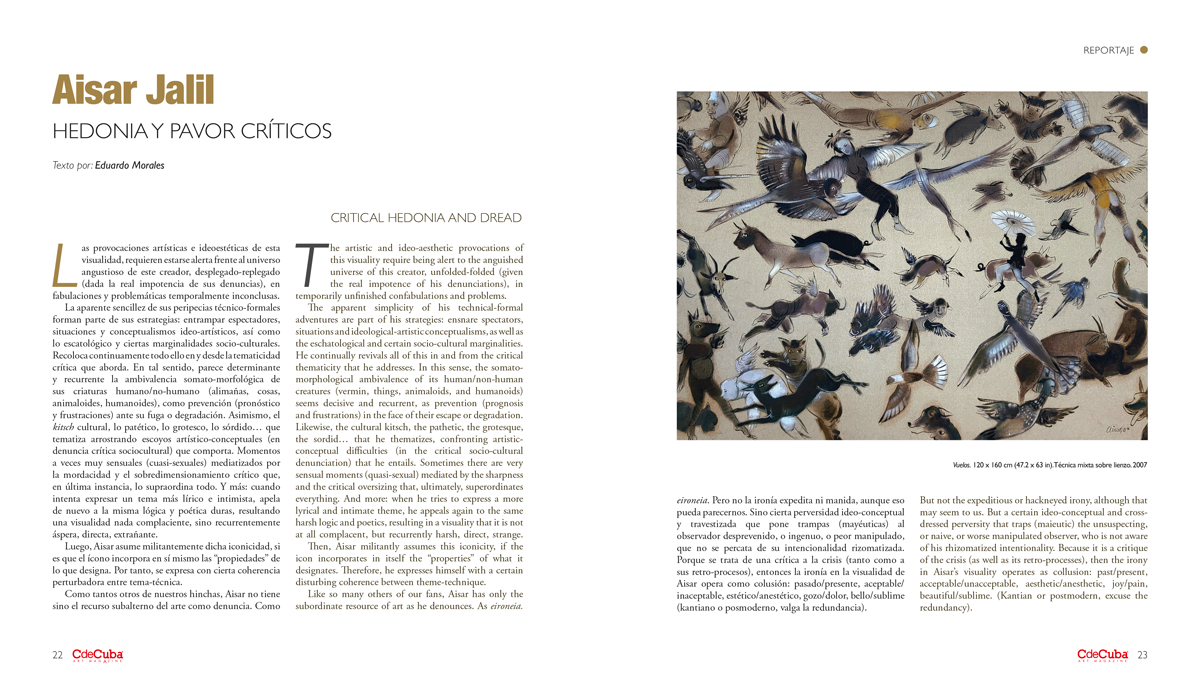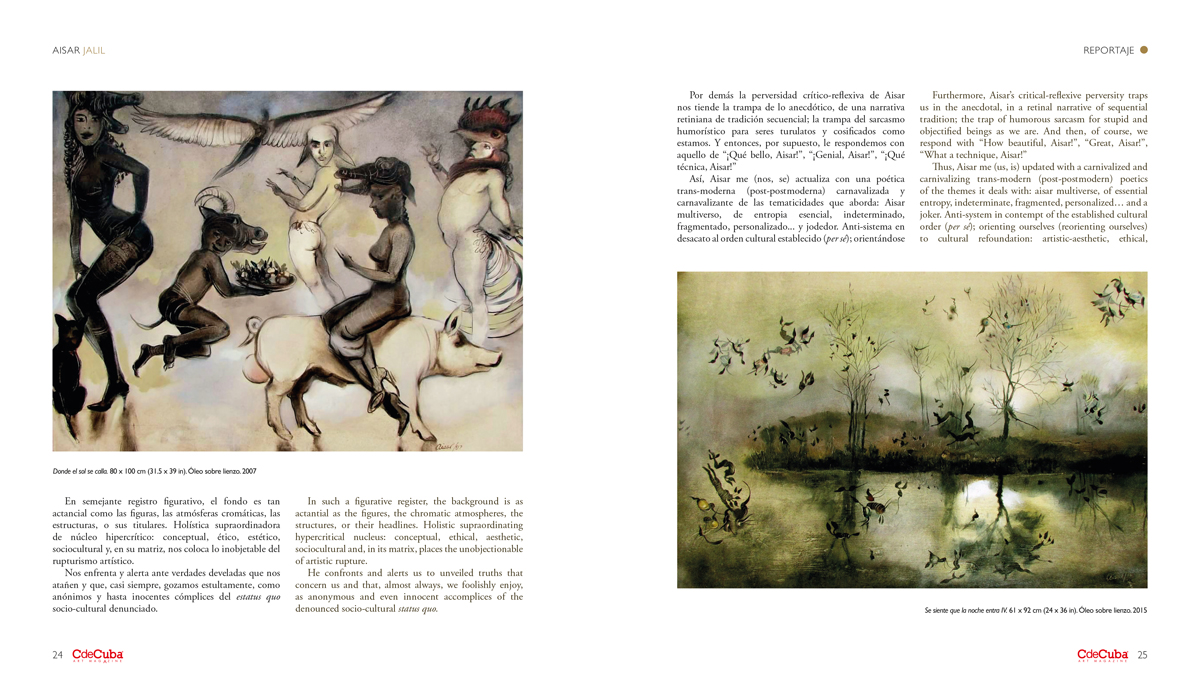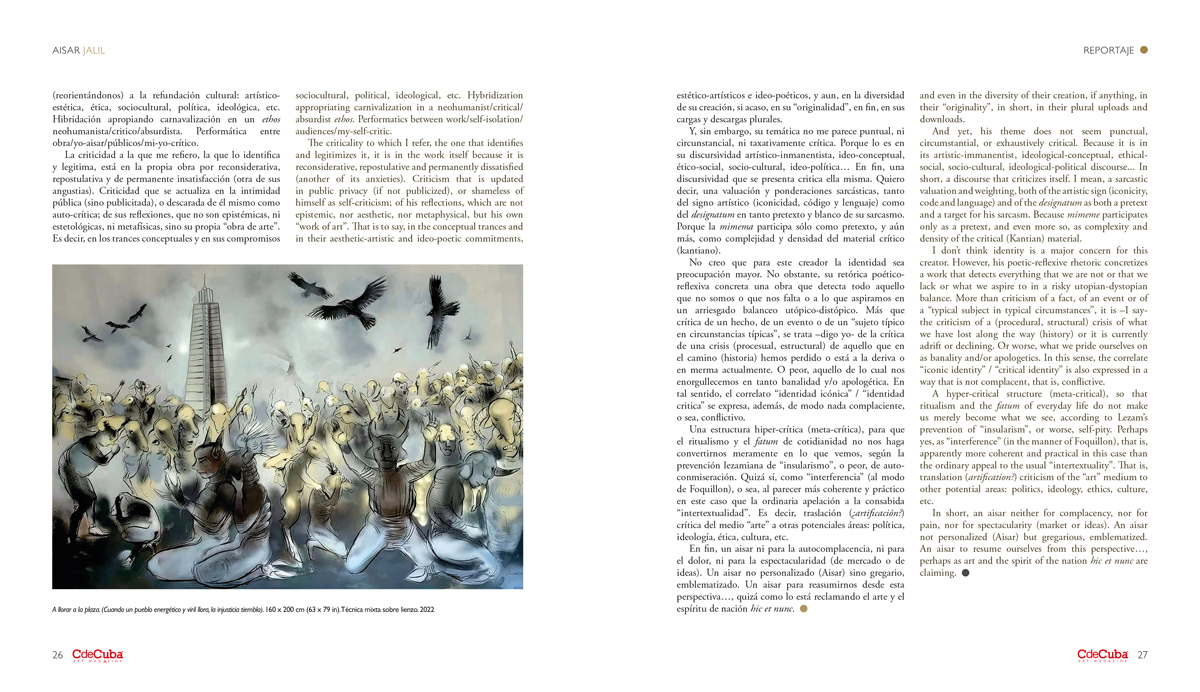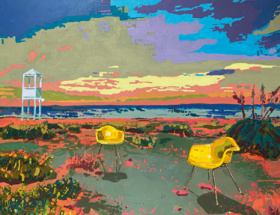Critical Hedonic and Dreads
By Eduardo Morales
The artistic and ideo-aesthetic provocations of this visuality require being alert to the anguished universe of this creator, unfolded-folded (given the real impotence of his denunciations), in temporarily unfinished confabulations and problems.
The apparent simplicity of his technical-formal adventures are part of his strategies: ensnare spectators, situations and ideological-artistic conceptualisms, as well as the eschatological and certain socio-cultural marginalities. He continually revivals all of this in and from the critical thematicity that he addresses. In this sense, the somato-morphological ambivalence of its human/non-human creatures (vermin, things, animaloids, and humanoids) seems decisive and recurrent, as prevention (prognosis and frustrations) in the face of their escape or degradation. Likewise, the cultural kitsch, the pathetic, the grotesque, the sordid… that he thematizes, confronting artistic-conceptual difficulties (in the critical socio-cultural denunciation) that he entails. Sometimes there are very sensual moments (quasi-sexual) mediated by the sharpness and the critical oversizing that, ultimately, superordinates everything. And more: when he tries to express a more lyrical and intimate theme, he appeals again to the same harsh logic and poetics, resulting in a visuality that it is not at all complacent, but recurrently harsh, direct, strange.
Then, Aisar militantly assumes this iconicity, if the icon incorporates in itself the “properties” of what it designates. Therefore, he expresses himself with a certain disturbing coherence between theme-technique.
Like so many others of our fans, Aisar has only the subordinate resource of art as he denounces. As eironeia. But not the expeditious or hackneyed irony, although that may seem to us. But a certain ideo-conceptual and cross-dressed perversity that traps (maieutic) the unsuspecting, or naive, or worse manipulated observer, who is not aware of his rhizomatized intentionality. Because it is a critique of the crisis (as well as its retro-processes), then the irony in Aisar’s visuality operates as collusion: past/present, acceptable/unacceptable, aesthetic/anesthetic, joy/pain, beautiful/sublime. (Kantian or postmodern, excuse the redundancy).
In such a figurative register, the background is as actantial as the figures, the chromatic atmospheres, the structures, or their headlines. Holistic supraordinating hypercritical nucleus: conceptual, ethical, aesthetic, sociocultural and, in its matrix, places the unobjectionable of artistic rupture.
He confronts and alerts us to unveiled truths that concern us and that, almost always, we foolishly enjoy, as anonymous and even innocent accomplices of the denounced socio-cultural status quo.
Furthermore, Aisar’s critical-reflexive perversity traps us in the anecdotal, in a retinal narrative of sequential tradition; the trap of humorous sarcasm for stupid and objectified beings as we are. And then, of course, we respond with “How beautiful, Aisar!”, “Great, Aisar!”, “What a technique, Aisar!”
Thus, Aisar me (us, is) updated with a carnivalized and carnivalizing trans-modern (post-postmodern) poetics of the themes it deals with: aisar multiverse, of essential entropy, indeterminate, fragmented, personalized… and a joker. Anti-system in contempt of the established cultural order (per sé); orienting ourselves (reorienting ourselves) to cultural refoundation: artistic-aesthetic, ethical, sociocultural, political, ideological, etc. Hybridization appropriating carnivalization in a neohumanist/critical/absurdist ethos. Performatics between work/self-isolation/audiences/my-self-critic.
The criticality to which I refer, the one that identifies and legitimizes it, it is in the work itself because it is reconsiderative, repostulative and permanently dissatisfied (another of its anxieties). Criticism that is updated in public privacy (if not publicized), or shameless of himself as self-criticism; of his reflections, which are not epistemic, nor aesthetic, nor metaphysical, but his own “work of art”. That is to say, in the conceptual trances and in their aesthetic-artistic and ideo-poetic commitments, and even in the diversity of their creation, if anything, in their “originality”, in short, in their plural uploads and downloads.
And yet, his theme does not seem punctual, circumstantial, or exhaustively critical. Because it is in its artistic-immanentist, ideological-conceptual, ethical-social, socio-cultural, ideological-political discourse… In short, a discourse that criticizes itself. I mean, a sarcastic valuation and weighting, both of the artistic sign (iconicity, code and language) and of the designatum as both a pretext and a target for his sarcasm. Because mimeme participates only as a pretext, and even more so, as complexity and density of the critical (Kantian) material.
I don’t think identity is a major concern for this creator. However, his poetic-reflexive rhetoric concretizes a work that detects everything that we are not or that we lack or what we aspire to in a risky utopian-dystopian balance. More than criticism of a fact, of an event or of a “typical subject in typical circumstances”, it is –I say- the criticism of a (procedural, structural) crisis of what we have lost along the way (history) or it is currently adrift or declining. Or worse, what we pride ourselves on as banality and/or apologetics. In this sense, the correlate “iconic identity” / “critical identity” is also expressed in a way that is not complacent, that is, conflictive.
A hyper-critical structure (meta-critical), so that ritualism and the fatum of everyday life do not make us merely become what we see, according to Lezam’s prevention of “insularism”, or worse, self-pity. Perhaps yes, as “interference” (in the manner of Foquillon), that is, apparently more coherent and practical in this case than the ordinary appeal to the usual “intertextuality”. That is, translation (artification?) criticism of the “art” medium to other potential areas: politics, ideology, ethics, culture, etc.
In short, an aisar neither for complacency, nor for pain, nor for spectacularity (market or ideas). An aisar not personalized (Aisar) but gregarious, emblematized. An aisar to resume ourselves from this perspective…, perhaps as art and the spirit of the nation hic et nunc are claiming.






